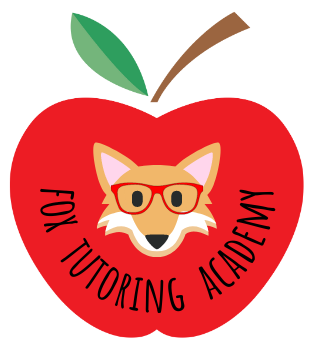Introduction
In the previous Blog we discussed Phonemic Awareness as a vital skill in early reading development, involving the ability to recognize and manipulate the sounds in spoken words. While this may sound technical, it can be developed through simple and enjoyable activities at home. Let’s dive deeper into some fun games and activities that can help enhance your child’s phonemic awareness.
1. Sound Matching Games
Objective: To identify objects or pictures that share the same beginning sound.
Materials: Various small household objects or pictures.
How to Play:
- Collect items or pictures that start with two or three different sounds (e.g., ‘b’, ‘s’, ‘m’).
- Mix them up and spread them out.
- Ask your child to find and group all items that start with the same sound.
- For example, ball, banana, and button in one group; sock, sun, and snake in another.
Skills Developed: Recognition of initial sounds in words.
2. Rhyme Time
Objective: To create and identify rhymes.
Materials: None needed, or use pictures of rhyming objects.
How to Play:
- Start by saying a simple word (e.g., cat).
- Take turns coming up with words that rhyme with it (hat, bat, mat).
- For a visual aid, use pictures and ask the child to pair rhyming objects.
Skills Developed: Awareness of rhyming patterns in words.
3. I Spy with My Little Ear
Objective: To identify objects based on their beginning sounds.
Materials: No special materials needed.
How to Play:
- Say, “I spy with my little ear, something that starts with the sound ___.”
- Use phonemic sounds like ‘b’ for ‘ball’ or ‘ch’ for ‘chair’.
- The child then looks around to find an object that starts with that sound.
Skills Developed: Discrimination of initial word sounds.
4. Phonemic Segmentation with Blocks
Objective: To break words down into individual sounds.
Materials: Building blocks or Lego.
How to Play:
- Say a simple word (e.g., dog).
- Ask your child to pick up one block for each sound they hear (d-o-g).
- They should end up with a pile of three blocks.
- This can be extended to longer words as they advance.
Skills Developed: Segmenting words into their constituent phonemes.
5. Clapping Syllables
Objective: To identify syllables in words.
Materials: None.
How to Play:
- Choose a word and pronounce it clearly.
- Clap your hands for each syllable in the word (e.g., el-e-phant = three claps).
- Encourage your child to try with different words.
Skills Developed: Syllable segmentation, which is closely related to phonemic awareness.
6. Phoneme Substitution
Objective: To change one sound in a word to make a new word.
Materials: None.
How to Play:
- Start with a base word like ‘cat’.
- Ask your child to change the first sound to ‘b’ to make ‘bat’.
- Play with different substitutions to create new words.
Skills Developed: Manipulation of sounds in words, a higher-level phonemic awareness skill.
7. Sound Sorting
Objective: To categorize objects based on their initial sounds.
Materials: Small objects or pictures.
How to Play:
- Select objects or pictures with different initial sounds.
- Ask your child to sort them into groups based on the first sound.
- For example, ‘c’ items in one group (cat, cup, car) and ‘t’ items in another (tree, tire, table).
Skills Developed:
Phonemic categorization and recognition.
8. Singing Songs for Phonemic Awareness
Objective:
To enhance phonemic awareness through the rhythm and rhyme of songs.
Materials:
No special materials needed, just your voices or access to children’s songs (can be found online or through children’s music albums).
How to Play:
- Choose simple children’s songs that have rhyming words and a clear, repetitive rhythm. Classic nursery rhymes or songs like “The Wheels on the Bus” are great choices.
- Sing the song together with your child. Encourage them to listen for and sing along with the rhyming words.
- After singing, discuss the rhyming words in the song. For example, in “Twinkle, Twinkle, Little Star,” focus on the rhymes like “star” and “are,” “high” and “sky.”
- As an advanced activity, make up new verses to the song by changing the rhyming words. For instance, instead of “The wheels on the bus go round and round,” try “The bees in the bus go buzz and buzz.”
- Clap along to the rhythm of the song, emphasizing the syllables in each word.
Skills Developed:
This activity enhances phonemic awareness by focusing on the rhythm and rhyme in songs. It helps children recognize rhyming patterns and syllables, and the repetitive and melodic nature of songs makes it easier for children to remember phonemic patterns.
Conclusion:
Singing is a natural and enjoyable way for children to learn about sounds and language. By incorporating songs into your phonemic awareness activities, you not only boost their reading skills but also provide a joyful and engaging learning experience. So, let your home ring with music and laughter, and watch as your child’s phonemic awareness grows!
Here is a great sight to get you started with music.
Here is a collection of games by Hallie and Ruth Helen Yopp.
Conclusion
These fun and interactive activities are not just educational, but also a great way to spend quality time with your child. Remember, the goal is to make these exercises enjoyable and pressure-free, fostering a love for learning and setting a solid foundation for reading success.

